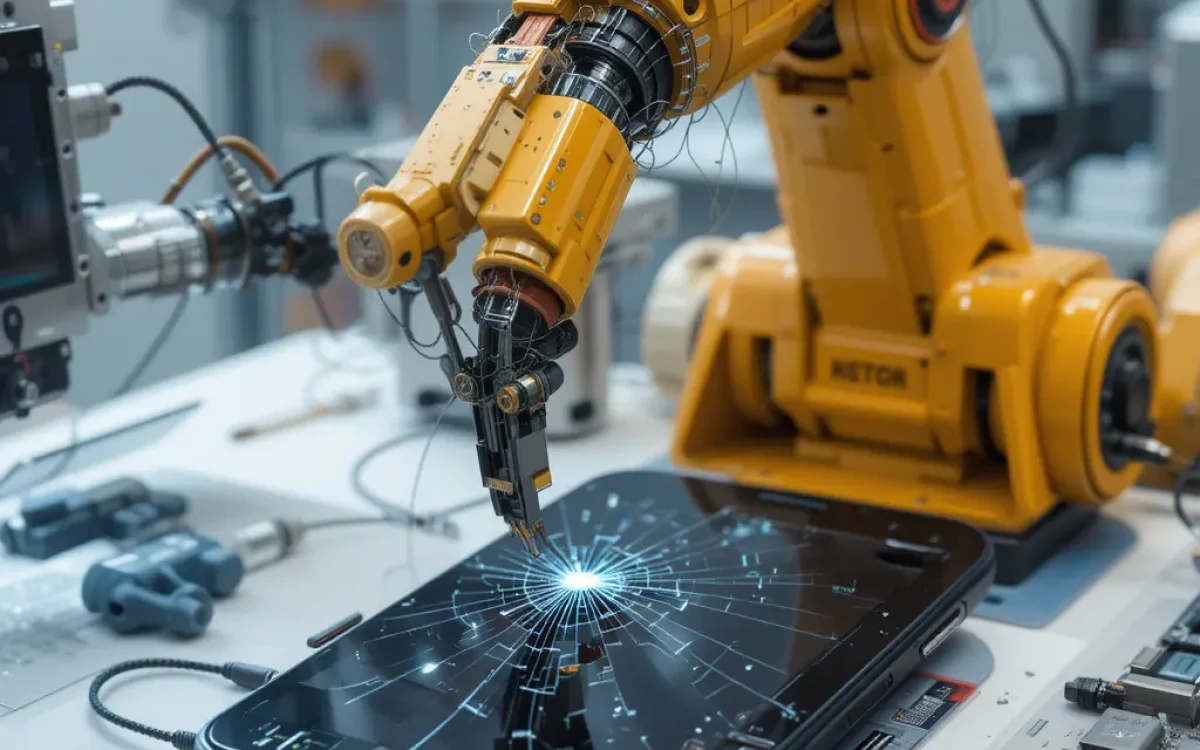Imagine a world where machines fix themselves without human intervention. This concept, once confined to science fiction, is now becoming a reality. Self-repairing technologies are emerging, promising to revolutionize industries by reducing downtime and maintenance costs. In this article, we explore the truth behind these innovations, examining how they work and their potential impact on our daily lives. Join us as we uncover the facts and dispel the myths surrounding self-repairing technologies.
Understanding Self-Repairing Technologies
Self-repairing technologies have long captured the imagination of both scientists and the general public. The idea of machines or materials that can fix themselves without human intervention seems like something out of a science fiction novel. However, as a materials science expert, I can assure you that these technologies are not just a myth. They are becoming a reality, albeit with some limitations and challenges.
How Do Self-Repairing Technologies Work?
At the core of self-repairing technologies is the concept of materials that can detect damage and initiate a repair process. Think of it like the human body’s ability to heal a cut. For instance, some polymers can “heal” themselves when exposed to heat or light, much like how a lizard regrows its tail. This process often involves microcapsules embedded in the material that release a healing agent when the material is damaged.
In my experience, one of the most fascinating applications of self-repairing technologies is in the aerospace industry. Imagine an airplane wing that can repair small cracks on its own, potentially preventing catastrophic failures. This is not just a dream; it’s a field of active research and development. However, it’s important to note that while these technologies hold great promise, they are not yet foolproof. The complexity of real-world applications means that there are still many hurdles to overcome.
Real-World Applications and Challenges
Self-repairing technologies are also making their way into consumer electronics. For example, some smartphones now feature screens that can heal minor scratches. While this is a step forward, the technology is still in its infancy. The healing process is often slow and may not fully restore the original appearance. As someone who has worked on similar projects, I believe that the potential for these technologies is immense, but we must temper our expectations with a dose of reality.
In conclusion, self-repairing technologies are a fascinating blend of science and innovation. They are not just a myth but a burgeoning reality with significant potential. However, like any emerging technology, they come with their own set of challenges and limitations. As we continue to explore and develop these technologies, it’s crucial to remain both optimistic and realistic about their capabilities and future impact.
Current Applications and Innovations
Self-repairing technologies have long captured the imagination of scientists and the public alike. The idea of materials that can heal themselves, much like living organisms, seems almost magical. Yet, in recent years, this concept has moved from the realm of science fiction into practical applications. As a materials science expert, I find this transition both fascinating and promising.
Current Applications in Everyday Life
Today, self-repairing technologies are not just a myth; they are a reality. One of the most common applications is in the automotive industry. Imagine a car paint that can fix its own scratches. This is not just a dream. Some manufacturers have developed coatings that use heat or sunlight to trigger a repair process. This innovation not only saves money but also extends the life of the vehicle’s appearance.
Another exciting application is in electronics. Self-healing circuits can restore functionality after damage, reducing electronic waste. This is crucial in a world where electronic devices are ubiquitous. I recall a conference where a colleague demonstrated a self-repairing phone screen. It was a moment of awe, seeing a cracked screen mend itself in minutes.
Innovations in Material Science
In the field of material science, researchers are exploring polymers that can heal themselves. These materials mimic biological processes, using embedded microcapsules that release a healing agent when damaged. This technology could revolutionize industries by reducing maintenance costs and improving safety. I believe that as these materials become more sophisticated, their applications will expand dramatically.
While self-repairing technologies are still evolving, their potential is immense. They challenge our understanding of materials and open new possibilities. As we continue to innovate, the line between myth and reality blurs, making the future of self-repairing technologies incredibly exciting.
Challenges and Limitations
Self-repairing technologies have captured the imagination of many, promising a future where devices and materials can heal themselves. However, the journey from concept to reality is fraught with challenges. As a materials science expert, I often find myself pondering the practical hurdles these technologies face.
Technical Challenges
One of the primary obstacles is the complexity of creating materials that can autonomously repair themselves. For instance, imagine a smartphone screen that could mend its own cracks. The idea is fascinating, yet the implementation is daunting. The materials must not only detect damage but also initiate a repair process without external intervention. This requires a delicate balance of chemistry and engineering, which is no small feat.
Economic and Practical Limitations
Beyond the technical hurdles, there are economic considerations. Developing self-repairing materials can be costly, and the benefits must outweigh these expenses. In my experience, industries are cautious about adopting new technologies unless there’s a clear financial incentive. Additionally, the durability and longevity of these materials in real-world conditions remain uncertain. Anecdotally, I recall a colleague’s experiment with self-healing polymers that worked well in the lab but failed under everyday wear and tear.
Despite these challenges, the allure of self-repairing technologies persists. The potential to reduce waste and extend the lifespan of products is significant. While the path is not straightforward, the pursuit of these innovations continues to inspire researchers and industry professionals alike. In my opinion, the reality of self-repairing technologies lies somewhere between myth and reality, with each step forward bringing us closer to a future where the line blurs.
Future Prospects and Developments
As we look to the future, the potential of self-repairing technologies is both exciting and daunting. Imagine a world where your smartphone screen heals itself after a fall, or your car’s paint repairs scratches overnight. These ideas, once confined to science fiction, are slowly becoming a reality. But how close are we to fully realizing these innovations?
Emerging Innovations
In recent years, researchers have made significant strides in developing materials that can autonomously repair themselves. For instance, scientists have created polymers that mimic the healing process of human skin. When damaged, these materials can reform bonds, effectively “healing” the break. This is akin to how a lizard regrows its tail, a natural process that has inspired many in the field of materials science.
As a materials science expert, I find these developments fascinating. I recall a conference where a colleague demonstrated a self-healing concrete. It was a simple yet profound moment, watching a crack disappear as if by magic. This technology could revolutionize infrastructure, reducing maintenance costs and extending the lifespan of buildings and roads.
Challenges and Considerations
Despite these advancements, challenges remain. The cost of producing self-repairing materials is still high, and scalability is a significant hurdle. Moreover, the integration of these materials into existing products requires careful consideration. It’s not just about creating a self-repairing phone case; it’s about ensuring the technology is reliable and safe for everyday use.
In my opinion, the journey of self-repairing technologies is much like the early days of the internet. Initially, it seemed like a myth, a distant dream. But with persistence and innovation, it became an integral part of our lives. The same could be true for self-repairing technologies. While the path is fraught with challenges, the potential benefits are too significant to ignore.
Ultimately, the question remains: Self-Repairing Technologies: Myth or Reality? As we continue to explore and innovate, the line between myth and reality blurs, bringing us closer to a future where self-repairing technologies are not just a possibility but a part of our everyday lives.
Conclusion
As we reach the end of our exploration into self-repairing technologies, it’s clear that the line between myth and reality is becoming increasingly blurred. These technologies, once the stuff of science fiction, are now making their way into practical applications. But what does this mean for us in the real world?
The Promise and the Reality
Self-repairing technologies hold immense promise. Imagine a world where your smartphone screen heals itself after a fall, or a car that repairs its own dents. These ideas are not just dreams; they are becoming tangible realities. For instance, researchers have developed materials that can mend themselves when exposed to light or heat. This is akin to how our skin heals after a cut, a process that feels almost magical.
However, the journey from lab to everyday use is not without its challenges. As a materials science expert, I have seen firsthand the hurdles in scaling these innovations. The complexity of integrating self-repairing materials into existing products is significant. Yet, the potential benefits make this a worthwhile pursuit. I recall a project where we tested self-healing concrete. The excitement of watching cracks disappear was palpable, a testament to the power of these technologies.
Looking Forward
While self-repairing technologies are not yet ubiquitous, their future looks promising. The ongoing research and development in this field suggest that what seems like a myth today could be a reality tomorrow. As we continue to innovate, the dream of a self-repairing world becomes more attainable. In my opinion, embracing these technologies could lead to a more sustainable and efficient future.
In conclusion, the journey of self-repairing technologies from myth to reality is a fascinating one. It challenges us to rethink what is possible and inspires us to push the boundaries of innovation. As we continue to explore this exciting frontier, the possibilities are endless.






